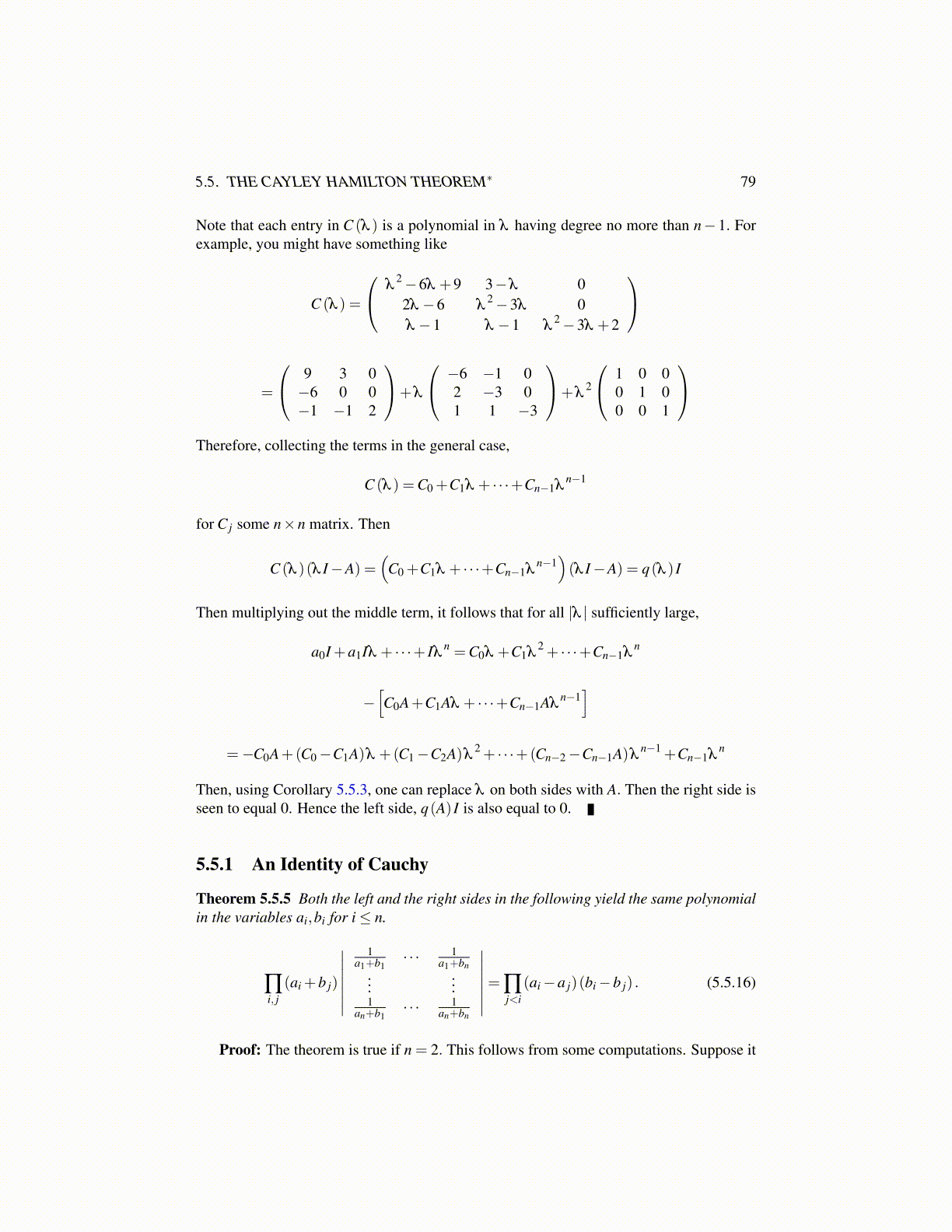
5.5. THE CAYLEY HAMILTON THEOREM∗ 79
Note that each entry in C (λ ) is a polynomial in λ having degree no more than n− 1. Forexample, you might have something like
C (λ ) =
λ2−6λ +9 3−λ 02λ −6 λ
2−3λ 0λ −1 λ −1 λ
2−3λ +2
=
9 3 0−6 0 0−1 −1 2
+λ
−6 −1 02 −3 01 1 −3
+λ2
1 0 00 1 00 0 1
Therefore, collecting the terms in the general case,
C (λ ) =C0 +C1λ + · · ·+Cn−1λn−1
for C j some n×n matrix. Then
C (λ )(λ I−A) =(
C0 +C1λ + · · ·+Cn−1λn−1)(λ I−A) = q(λ ) I
Then multiplying out the middle term, it follows that for all |λ | sufficiently large,
a0I +a1Iλ + · · ·+ Iλn =C0λ +C1λ
2 + · · ·+Cn−1λn
−[C0A+C1Aλ + · · ·+Cn−1Aλ
n−1]
=−C0A+(C0−C1A)λ +(C1−C2A)λ2 + · · ·+(Cn−2−Cn−1A)λ
n−1 +Cn−1λn
Then, using Corollary 5.5.3, one can replace λ on both sides with A. Then the right side isseen to equal 0. Hence the left side, q(A) I is also equal to 0.
5.5.1 An Identity of Cauchy
Theorem 5.5.5 Both the left and the right sides in the following yield the same polynomialin the variables ai,bi for i≤ n.
∏i, j
(ai +b j)
∣∣∣∣∣∣∣1
a1+b1· · · 1
a1+bn...
...1
an+b1· · · 1
an+bn
∣∣∣∣∣∣∣= ∏j<i
(ai−a j)(bi−b j) . (5.5.16)
Proof: The theorem is true if n = 2. This follows from some computations. Suppose it